#GSLV MkIII
Explore tagged Tumblr posts
Text
India's Ambitious Space Odyssey: Exploring the Bharatiya Antariksha Station & Gaganyaan Mission
India's Ambitious Space Odyssey: Exploring the Bharatiya Antariksha Station & Gaganyaan Mission #IndiaSpaceExploration #BharatiyaAntariksha #GaganyaanMission #ISRO #NASA #SpaceTechnology #HumanSpaceflight #COVID19Impact #SpacePolicy
India’s ambitions in space have reached new heights with the unveiling of the Bharatiya Antariksha Station and the Gaganyaan Mission. These endeavors mark significant milestones in the country’s journey towards space exploration and human spaceflight capability. As the Indian Space Research Organisation (ISRO) spearheads these projects, India stands on the cusp of a historic leap into the cosmos,…

View On WordPress
#Bharatiya Antariksha Station#COVID-19 impact#Gaganyaan Mission#GSLV MkIII#human spaceflight#India#ISRO#NASA collaboration#Space Exploration#space policy#space technology
0 notes
Text
Imagimake Mapology Chandrayaan | Isro Rocket Model & Satellite | Astronaut Toy | Educational Toys For Kids 5+Years | 3D Puzzles | Gifts For 5 Year Old Boy & Girl - Multicolor
Price: (as of – Details) Product Description CELEBRATE THE ACHIEVEMENTS OF ISRO: Imagimake along with the Indian Space Research Organization (ISRO) is excited to teach children about India’s Mission to the MoonMAKE ROCKET & SATELLITE MODELS: Make 4 different 3D rocket models and Satellites as you follow the journey of the GSLV MKIII to launch orbiter which carried the Pragyan Rover on board the…

View On WordPress
#5Years#8pm deals today 99 rs#99 0/0#99 0ffer#99 3 d. pen#99 5g phone#99 99#99 99 cube#99 99 rupees item#99 999 wale smart watch#99 9999#99 air buds#99 airpods#99 alcohol#99 alcohol isopropyl#99 all products#99 aloe vera gel#99 aloe vera lip gloss#99 amul dark chocolate#99 apple plant#99 attar#99 bag#99 bazar#99 bedsheets super king size#99 below products#99 bluetooth#99 body wash#99 books#99 bottle#99 bsc razer shaving foam
0 notes
Photo

ISRO: GSLV MkIII carrying Chandrayaan2 spacecraft, undergoing launch checks at launch pad in Sriharikota. Launch is scheduled at 2:51 am IST on July 15. via /r/space https://ift.tt/2YQHTzV
2 notes
·
View notes
Video
youtube
ISRO's GSLV Mk III D2 / GSAT-29 Mission Full Launch video | Raw footage
GSAT-29 is among the advanced high throughput communication satellites planned by Isro, which has already launched the GSAT-19. The other two in the immediate pipeline are: GSAT-11, which was recalled from its launchpad earlier this year and is gearing up for a December launch, and GSAT-20, which is likely to be launched in 2019.
Together, these satellites will usher in an age of high-speed internet connectivity in the country, bridging the gap between cities and the hinterland.
Director of U R Rao Satellite Centre P Kunhikrishnan said GSAT-11 would be ready for launch from French Guyana on December 4.
GSLV-MKIII A three-stage heavy lift launch vehicle, GSLV-MKIII has two solid strap-ons as first stage, a liquid propellant core as second stage and a cryogenic as third stage. It is designed to carry 4-tonne class of satellites to geosynchronous transfer orbit (GTO) or about 10 tonnes to low earth orbit (LEO), which is about twice the capability of GSLV Mk II. That the present mission was only the second developmental flight of GSLV-MKIII means that the space agency needs a glitch-free launch to keep its date with the bigger missions while also establishing this class of rocket as its mainstay.
The 3,423kg communication satellite is designed for a mission life of 10 years. The three-axis body-stabilised multibeam satellite carries two high throughput communication transponders (Ka/Ku-band) intended to meet the communication requirements of users, including those in remote areas.
In addition, several new technologies such as Q and V band payload, data transmission through optical communication link will be demonstrated.
Liquid Propulsion Systems Centre director V Narayanan said the he indigenous cryogenic engine had performed “exceedingly well.”
Isro chairman K Sivan said, “With the successful launch, we have completed the developmental flights of GSLV MkIII.” He said the first operational flight of GSLV MkIII would be Chandrayaan-2 planned in January 2019. The rocket would also carry human to space. “The first unmanned mission will be in December 2020. There will be one more unmanned mission before the manned mission. The manned mission is planned for December 2021.”
He said nearly 90% of the activity in this mission had been done by industry for both the launcher and the satellite. “They supplied flawless systems and hardware for the mission,” he said.
The Indian Space Research Organisation (Isro) on Wednesday successfully placed another communication satellite in orbit, while also achieving a crucial success of GSLV-MkIII rocket which is slated to launch two big missions --Chandrayaan-2 and the human space mission -- in the next four years.
Around 17 minutes after lifting off from the second launch pad at Satish Dhawan Space Centre in Sriharikota at 5.08pm, GSLV MkIII-D2 placed GSAT-29 in a geostationary transfer orbit (GTO) with the required inclination to the equator. A few days later, the satellite will be placed in its final geostationary orbit (GEO) using the onboard propulsion system. It will be located at 55°E longitude.
#GSLV Mk III - D2 GSAT-29 Mission Curtain raiser video Hindi#ISRO's High thrust Vikas Engine#ISRO#Vikas Engine#IPRC#PSLV#GSLV#GSLV Mk-III#GSLV-MkIII-D2#GSAT-29#gslv mk3#gslv mk3 d1#gslv mk3 launch reaction#gslv mk3 d2#gslv mk3 launch#gslv mk3 upsc#gslv mk3 assembly#gslv mk3 first launch#gslv mk3 in hindi#gslv mk3 documentary#full launch video#raw footage#space#news#rocket#satellite#launch news
1 note
·
View note
Text
📰 மீண்டும் பயன்படுத்தக்கூடிய GSLV Mk-III ஏவுதள வாகனத்தில் இஸ்ரோ வேலை செய்கிறது
📰 மீண்டும் பயன்படுத்தக்கூடிய GSLV Mk-III ஏவுதள வாகனத்தில் இஸ்ரோ வேலை செய்கிறது
இந்திய விண்வெளி ஆராய்ச்சி நிறுவனம் (இஸ்ரோ) ஜி��ஸ்எல்வி எம்கே -3 ஏவுகணை வாகனங்களை செங்குத்தாக தர��யிறக்க உதவும் தொழில்நுட்பங்களில் செயல்பட்டு வருகிறது, எலோன் மஸ்கின் ஸ்பேஸ்எக்ஸ் செய்வது போல, முதல் மற்றும் இரண்டாவது நிலைகளை மீட்டெடுக்க, ஒரு மூத்த அதிகாரி கூறினார். இது GSLV Mk-III ஐ மீண்டும் பயன்படுத்த விண்வெளி ஏஜென்சிக்கு உதவும், இதனால் பணத்தை சேமிக்க உதவுகிறது என்று அந்த அதிகாரி கூறினார். சிஐஐ…
View On WordPress
0 notes
Text
On 1st Anniversary of Chandrayaan-2 Launch, ISRO Says All 8 Payloads Performing Well
On 1st Anniversary of Chandrayaan-2 Launch, ISRO Says All 8 Payloads Performing Well
File photo of India’s second Moon mission Chandrayaan-2 lifting off onboard GSLV Mk III-M1 launch vehicle from Satish Dhawan Space Center at Sriharikota in Andhra Pradesh.
The global mapping of the lunar surface and polar coverage are being carried out as per the mission plan, while public release of science data from Chandrayaan-2 will begin in October, ISRO said.
PTI
Last Updated:Jul…
View On WordPress
#1st#anniversary#Chandrayaan-2#Chandrayaan2#COVID 19 Pandemic#GSLV-MkIII-M1#ISRO#launch#Payloads#performing#space mission#Vikram lander
0 notes
Text
On 1st Anniversary of Chandrayaan-2 Launch, ISRO Says All 8 Payloads Performing Well
On 1st Anniversary of Chandrayaan-2 Launch, ISRO Says All 8 Payloads Performing Well
[ad_1]

File photo of India’s second Moon mission Chandrayaan-2 lifting off onboard GSLV Mk III-M1 launch vehicle from Satish Dhawan Space Center at Sriharikota in Andhra Pradesh.
The global mapping of the lunar surface and polar coverage are being carried out as per the mission plan, while public release of science data from Chandrayaan-2 will begin in October, ISRO said.
PTI
Last…
View On WordPress
0 notes
Photo
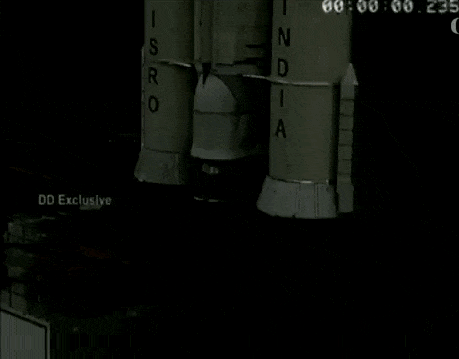
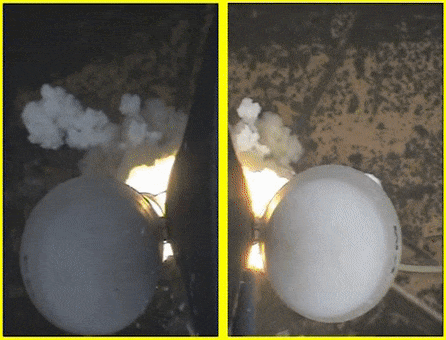
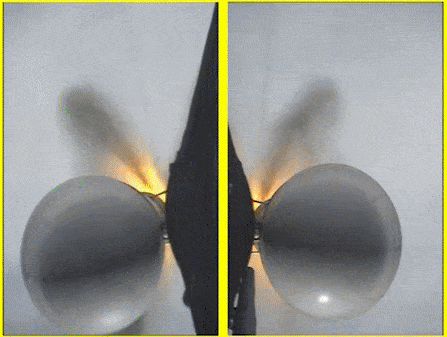

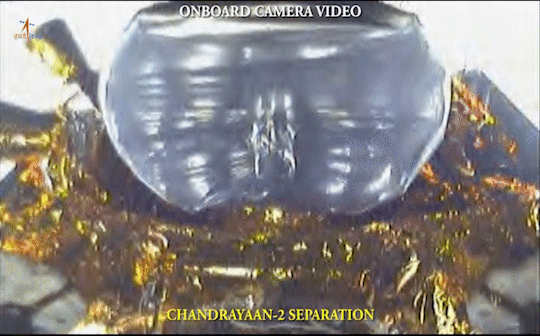
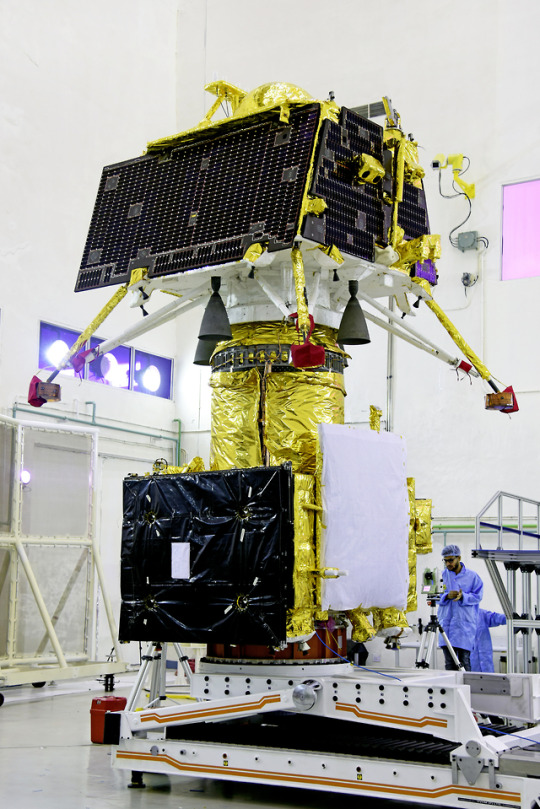
India launches first lunar lander, rover, on Chandrayaan-2 mission (July 22, 2019).
Closing out a week of historic lunar anniversaries, India’s space research organization, ISRO, attempted to make history of their own Monday morning with the launch of the Chandrayaan-2 lunar mission.
The spacecraft is part of the Indian Space Research Organization's, or ISRO, Chandrayaan lunar exploration program, which first saw an orbiter mission launch in 2008.
Chandrayaan-2 is a far more ambitious mission that includes three distinct spacecraft, an orbiter, lander, and rover. If successful, it will mark only the fourth time that a country has softly landed on the moon, behind Russia, the United States, and China.
The 5,244 pound Chandrayaan-2 orbiter will perform orbital measurements and serve as a communications link between ground controllers and the lander. Eight experiments will collect data on the lunar surface and environment, as well as surface mapping. Engineers estimate a one-year lifespan for the orbiter. Named after the founder of Indian space program, the 3,183-pound Vikram lander carries three experiments to measure the Lunar surface, atmosphere, and interior. Additionally, Vikram will transport the mission’s third component, a small, six-wheeled rover named Pragyan. Weighing in at just 60 pounds, Pragyan, which translates to wisdom in Sanskrit, will be India’s first mobile robotic explorer on another world. Its two science experiments will perform laser spectroscopy and X-ray spectrography. Pragyan will travel up to half a kilometer per day with a top speed of 1 centimeter per second. Engineers expect both the Vikram lander and Pragyan rover to operate for one lunar day, or two Earth weeks.
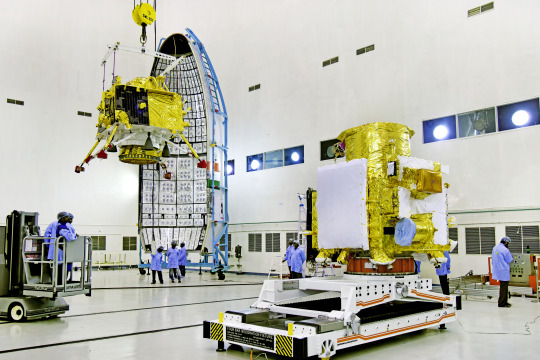
The combined Vikram lander/Pragyan rover, left, is seen integrating with the Chandrayaan-2 orbiter, right at the Satish Dhawan Space Center’s integration building prior to launch. P/c: ISRO A long spiral to the Moon.
Liftoff occurred on the first scientific flight of India’s largest rocket, the GSLV-MkIII, which made its first flight in 2014. Liftoff occurred at 5:13am EDT, or 2:43pm India Standard Time, from the Second Launch Pad of the Satish Dhawan Space Centre in India. Following separation of the rocket’s side boosters, core stage, and payload fairing, Chandrayaan-2 achieved Earth orbit 16 minutes after launch.
Chandaryaan-2 will use a low-energy flight profile for its voyage to the moon that will take up to 44 days to achieve its final orbit. The spacecraft will use its onboard engines to gradually rise its apogee – or furthest point in its orbit – performing a Lunar Orbit Insertion burn 30 days after liftoff. The spacecraft will then spend the next 13 days gradually lowering its apogee to create a circular orbit 100 kilometers above the lunar surface. 48 days after liftoff, the Vikram lander with Pragyan inside is slated to touch down near the lunar south pole. ISRO Chairman Dr. K. Sivan expects the landing to occur on September 7.
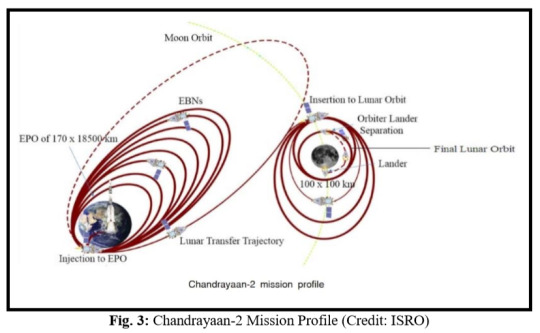
Chandryaan-2 was originally a joint Indian-Russian mission slated to launch in 2011; financial woes, coupled with the high profile failure of the Phobos Grunt Mars mission with Europe ultimately caused Russia to pull out of the project. India’s commitment to complete the missions by themselves pushed the launch to 2018 and further technological hurdles ultimately caused the mission to be delayed to the first half of 2019. Click here to see our GSLV launch vehicle archive.
youtube
P/c: ISRO.
207 notes
·
View notes
Photo

Launch photo. of GSLV MKIII-M1 carrying the Chandrayaan 2.
via reddit
144 notes
·
View notes
Photo

2019 July 27
Chandrayaan 2 Launch Image Credit & Copyright: Neeraj Ladia
Explanation: On July 22nd this GSLV (Geosynchronous Satellite Launch Vehicle) MkIII rocket vanished from sight into a cloud bank an instant after this dramatic snapshot was taken. Launched from India's Satish Dhawan Space Centre it carried the Chandrayaan 2 mission spacecraft into Earth orbit. The spacecraft's orbiter, lander, and rover are destined for the Moon, though. In the coming weeks it will perform a series of orbit raising maneuvers, eventually transferring to lunar orbit in early September. Carrying the solar-powered rover, the lander is scheduled to separate and attempt its autonomous soft landing at high latitudes near the lunar south pole. It should arrive on the lunar nearside near local sunrise and the start of a two Earth-week long lunar day on September 7.
∞ Source: apod.nasa.gov/apod/ap190727.html
82 notes
·
View notes
Photo

Chandrayaan 2 Launch
On July 22nd this GSLV (Geosynchronous Satellite Launch Vehicle) MkIII rocket vanished from sight into a cloud bank an instant after this dramatic snapshot was taken. Launched from India's Satish Dhawan Space Centre it carried the Chandrayaan 2 mission spacecraft into Earth orbit. The spacecraft's orbiter, lander, and rover are destined for the Moon, though. In the coming weeks it will perform a series of orbit raising maneuvers, eventually transferring to lunar orbit in early September. Carrying the solar-powered rover, the lander is scheduled to separate and attempt its autonomous soft landing at high latitudes near the lunar south pole. It should arrive on the lunar nearside near local sunrise and the start of a two Earth-week long lunar day on September 7.
[Source]
Love Space? Subscribe to our channel ➡️ http://bit.ly/bausubconfirm
18 notes
·
View notes
Text
BEST COVER STORY Space – The final frontier

ISRO has been a major source of inspiration for entrepreneurs to finally have a little space on the space of their own and get a little closer to the mysteries that lies beyond. Here, we have the ‘space entrepreneurs’ talking about how they ventured into space, what they think about their mentor ‘ISRO’ and home ‘Indian aerospace industry’.
India’s GSLV MkIII-M1, successfully launched the Chandrayaan-2 spacecraft into an Earth’s orbit on July 22, 2019. This ‘Bahubali’ moment India awaited since almost a decade; a source of inspiration to all the eyes, physical and digital.The stars, the skies, the Sun, the moon and what lies beyond them has always caught the eye. When the whole world was wondering what lies in the sky, few people have succeeded in reaching the sky; they found openings in space. A new wave of space technology startups is skyrocketing in India, catching the world’s eye, keen to join the space race.
Startups of the space Manufacturing for the aerospace sector is a difficult task for various reasons. Some of the said complexities are capital intensive and require extensive technical equipment and facilities for prolonged gestation. Few of the start-ups have been dedicatedly catering to the demands of the aerospace manufacturing.
Astrome Technologies – Dr. Prasad H L Bhat, Chairman and CTO When we started Astrome, my colleague Neha and I, were firm on making profound use of space technology to uplift the life in emerging nations. On understanding the delinquencies, we realised that there’s a dire requirement of high speed internet infrastructure. Particularly in developing countries, because when the concerns will be resorted from space, it would profoundly thrive the economies of rural and semi-urban geographies.
Manastu Space – Ashtesh Kumar, Co-founder, CTO and Tushar Jadhav, Co-founder, CEO
We were finishing final integration of our satellite on to the Indian rocket PSLV, when during a discussion, the staff, there, mentioned how people have lost their lives while handling highly toxic and carcinogenic fuel hydrazine for the satellite. They were not astronauts who had glorious deaths. It became clear to us that if the world got to realise the full potential of the space, it has to be in a safe and sustainable way; for that we decided to create the world’s safest satellite fuel and propulsion system.
Skyroot Aerospace – Pawan Kumar Chandana, Founder, CEO and Bharath Daka, Co-founder, COO Skyroot is building India’s first private space launch vehicle and as founders we were part of this sector before. Hence, we know there is a gap in supply, and therefore a great opportunity too owing to increase in demand for space-based services. Our start-up is different because we were founded by former ISRO scientists, have a team with strong domain expertise, and also, we do not operate on conventional rules resulting in accelerated progress. Indian aerospace ecosystem is mostly subsystem suppliers and lacks OEM’s building world class products. We believe aerospace sector has the potential to be on the likes of IT revolution in India in the years to come.
Xovian – Raghav Sharma, Founder Well, we started this during our college days in 2012-13. During that time, my 1st publication of research paper on rocket propulsion made me create an online platform for aerospace innovation. Later on, we formed our venture Xovian in 2015 with a vision to provide sustainable solutions in satellite technologies. Currently, we are working on innovative remote sensing technology which can cut down the cost of factor by 100 compared to the current remote sensing technologies. This is one such thing that distinguishes us from the other start-ups.
ISRO’s role in propelling the growth of Indian aerospace industry The aerospace industry in India has grown significantly in the last 5 years. This has been, in large, possible, thanks to ISRO. The organisation’s technology transfer program and private industry contract program have helped new private players evolve in the industry. The aerospace industry also has a heavy dependency on other industries like manufacturing and electronics industries. ISRO has shown cognizance of this with their methodical interaction with those industries and development of their capabilities. Bhat, speaking about Astrome’s focus on internet delivery from space, has distinguished ISRO scientists like Dr P S Goel, Dr. B N Suresh as their key advisors. He further adds, “ISRO is responsible for some key leaps in India’s space technology, including the launch of Chandrayaan-II, and the work-horse standard launcher of PSLV.”
Ensuring product integrity in the aerospace industry Safeguarding a product’s integrity is highly essential, especially in aerospace industry. Daka says, “Matured engineering and quality assurance thought process, is the Holy Grail to ensure product integrity in the aerospace industry. He further adds, “As the cost and lead time to manufacture and test aerospace products is high, it is imperative to follow a streamlined process in both design and testing and also ensure no corners are cut in the process. However, this should not lead to unnecessary delay at times when things get stuck, where matured engineering judgment to move forward in the right direction with calculated risk plays a very important role.”
To Read full Article click on link mentioned below :-
https://www.oemupdate.com/cover-story/space-the-final-frontier/
2 notes
·
View notes
Photo

Launch photo. of GSLV MKIII-M1 carrying the Chandrayaan 2. via /r/space https://ift.tt/2GA1Gwa
0 notes
Photo

Chandrayaan 2 Fırlatılışı

Görsel & Telif: Neeraj Ladia
22 Temmuz’da bu GSLV (Jeosenkron Uydu Fırlatma Aracı) MkIII roketi, bu dramatik enstantane çekildikten sonra hemen bir bulut kümesi içinde gözden kayboldu. Hindistan’ın Satish Dhawan Uzay Merkezi’nden fırlatılan roket Chandrayaan 2 görevi uzay aracını Dünya yörüngesine taşıdı. Ama uzay aracının uydusu, kondusu ve gezgini Ay’a gidecek. Önümüzdeki haftalarda bir dizi yörünge yükseltme manevrası yapacak ve nihayetinde Eylül’ün başlarında Ay yörüngesine girecek. Güneş enerjili gezgini taşıyan kondunun, Ay’ın güney kutbu yakınlarında yüksek enlemlerinde ayrılması ve otonom yumuşak iniş denemesini gerçekleştirmesi planlanıyor. Aracın Ay’ın yakın yüzüne, 7 Eylül’de yerel gün doğumu ve iki dünya haftası süren Ay gününün başlangıcı yakınlarında varması gerekiyor.
Görsel & Telif: Neeraj Ladia
Günün Astronomi Görseli 27 Temmuz 2019 yazısı ilk olarak Uzaydan Haberler sayfasında göründü.
4 notes
·
View notes
Video
youtube
GSLV-MKIII-M1 / Chandrayaan-2 Mission Liftoff and Onboard Camera footage
3 notes
·
View notes
Text
Tifizza gives a hearty congratulations to all the people from ISRO on successful. Launch of chandrayan-2 (GSLV MkIII-M1). Its a proud moment for every Indian so lets cheers and celebrate this proud moment with tifizza.

1 note
·
View note